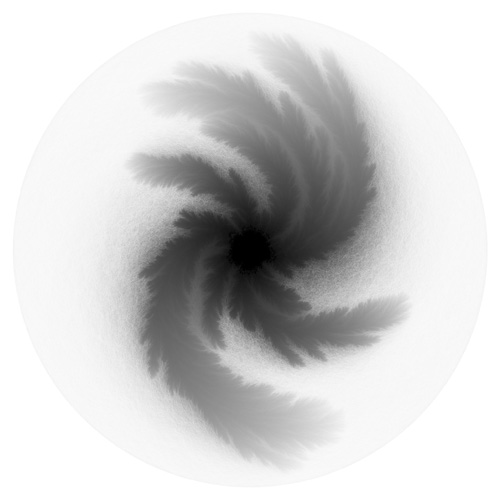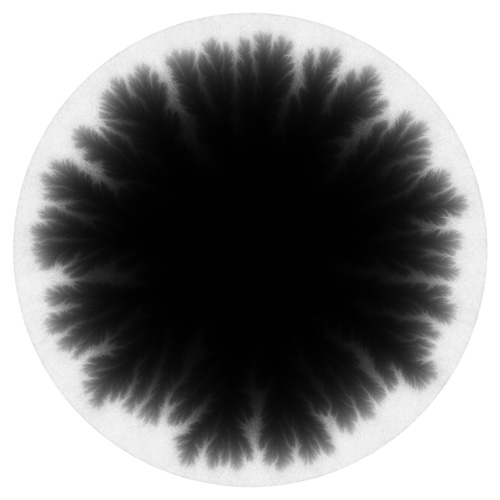Andy Lomas
“Flow 9”
Archival digital print, 26" x 26", 2006.

This image is composed of the layered trajectories followed by millions of particles.
Each individual trajectory is essentially an independent random process, with
the trail terminating when it reaches a deposition zone. Collectively the paths
combine to form delicate complex shapes of filigree and shadow in the areas
of negative space that the paths don't reach.
Over time, as particles deposit they create a growing region that future particles
will not be able to enter. There are no actual defined boundaries, simply intricately
structured gradients of tone formed by the end points of trajectories.
Andy Lomas, Digital Artist, London
"These pieces are part of a study into how complex organic forms can be created
from simple mathematical rules.
The base algorithms used to generate the forms are variations on Diffusion
Limited Aggregation. Different structures are produced by introducing small
biases and changes to the rules for particle motion and deposition. The growth
like nature of the process, repeatedly aggregating on top of the currently deposited
system, produces reinforcement of deviations caused by forces applied to the
undeposited particles as they randomly move. This means that small biases to
the rules and conditions for growth can produce great changes to the finally
created form.
All the software used to simulate the structures and render the final images
was written by the artist in Visual C++."
andylomas@yahoo.com
http://www.andylomas.com
Another work by the artist
“Flow 19”
Archival digital print, 26" x 26", 2006.

This image is composed of the layered trajectories followed by millions of particles.
Each individual trajectory is essentially an independent random process, with
the trail terminating when it reaches a deposition zone. Collectively the paths
combine to form delicate complex shapes of filigree and shadow in the areas
of negative space that the paths don't reach.
Over time, as particles deposit they create a growing region that future particles
will not be able to enter. There are no actual defined boundaries, simply intricately
structured gradients of tone formed by the end points of trajectories.